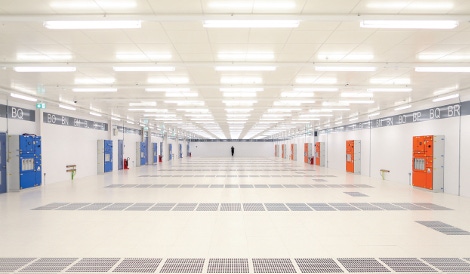Digital Realty to Tackle Cooling Efficiency to Meet White House Challenge
Operator plans to fine-tune economization, VFDs and containment to reach 20% energy reduction goal

To deliver on its commitment to a big reduction in energy use of a block of data centers in its massive U.S. property portfolio, Digital Realty Trust is going to focus on improving data center cooling efficiency.
After IT hardware, the cooling system is the second biggest energy consumer in a data center. Consequently, improving energy efficiency of the cooling infrastructure is the best way to make the biggest dent in the facility’s overall energy consumption.
Digital Realty, the San Francisco-based wholesale data center giant with more than 131 properties in its global portfolio, recently joined a White House program called the Better Buildings Challenge. Overseen by the Department of Energy, it challenges participating public and private sector organizations to commit to drastic cuts in energy consumption of their buildings.
Earlier this week, the DoE announced a list of organizations that accepted a challenge under the program aimed specifically at data centers. There are 19 organizations on the list, including two large data center providers: Digital Realty and CoreSite Realty Corp.
A CoreSite spokesperson could not provide comment in time for publication, and we’ll be following up with them in the near future.
Digital to select block of U.S. data centers
By joining the challenge, Digital Realty (as well as CoreSite) committed to selecting a block of properties from its U.S. portfolio and reducing their energy consumption by 20 percent over the next 10 years. They have to cut energy use on the facilities side, so simply removing or upgrading IT gear will not count.
David Schirmacher, senior vice president of portfolio operations at Digital Realty, said the company can select a block of facilities and set the total energy use baseline to reduce from based on energy consumption in 2011 and onward, given that power metering data from three years ago is available.

David Schirmacher, Senior Vice President, Data Center Operations, Digital Realty, uses an in-house developed DCIM tool to measure and manage about 130 facilities in Digital Realty's portfolio. (Photo by Colleen Miller.)
In other words, if you have a data center whose power use was metered in 2011, you can use that data as baseline; and if you made some efficiency improvements between then and now, you can count the resulting reduction in energy use toward the total goal.
Effort will take dedicated staff resources, capital investment
While using past improvement data is an option, Schirmacher said he was not suggesting the company would select it. “We’re not intending to do any paper exercises,” he said.
Digital Realty has dedicated members on its technical operations team focused exclusively on identifying opportunities to improve energy efficiency across the portfolio. Schirmacher expects the company’s capital investment in the effort to be significant.
Economization, VFDs, containment
The provider has not selected the facilities it will include in the Better Buildings block, but the actual data center cooling improvements will fall into three general areas: maximizing free cooling through the use of outside air, optimizing variable frequency drives on air handlers and improving containment.
Click here to read about The Ten Most Common Cooling Mistakes Data Center Operators Make
The first measure, maximization of free cooling, involves tuning cooling systems in the facilities that have airside economizers to rely on outside air more than they do today. Schirmacher gave an example of a Digital Realty data center he visited this week in Australia, which he said ran for a whole day with all of its mechanical cooling systems offline, relying entirely on outside air.
The second tactic is to fine-tune the means by which air gets pushed around the data center floor. This means fine-tuning VFDs on CRAHs in some facilities and installing VFDs in others that don’t have them. This is going to be the most capital-intensive part of the effort, Schirmacher said.
Finally, containment, which will involve minimizing cold air leakage in inappropriate spots on the raised floor and containing hot and cold air streams to keep them from mixing.
Digital Realty is planning to track progress of the effort using EnVisionSM, its homegrown data center infrastructure management software.
DoE will validate the block of properties the company will have identified. Digital Realty will have to demonstrate that they are properly metered.
DoE scientists will also have to validate the data center provider’s baseline energy use data and future energy savings data.
About the Author
You May Also Like







